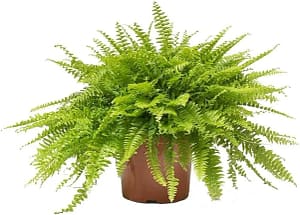10 Common Indoor Plants (2024): Beautify Space with Nature Care, Tips
Common Indoor plants are not just about aesthetics. They breathe life into our homes, improving air quality and adding a touch of nature to our indoor spaces. Whether you have a green thumb or are just starting your plant journey, there’s an indoor plant perfect for you. In this article, we’ll explore some common indoor plants, providing tips and insights to help you choose the best ones for your home.
Benefits of Indoor Plants
Indoor plants are more than just decorative pieces. They have a plethora of benefits:
- Air Purification: Plants like the snake plant and peace lily filter harmful toxins from the air, making your home healthier.
- Stress Reduction: Being around greenery can reduce stress and enhance your mood.
- Enhanced Focus: Studies show that having plants in your workspace can boost concentration and productivity.
Types of Common Indoor Plants
1. Snake Plant

The Planting snake plant, also known as Sansevieria, is a hardy and low-maintenance plant. Its tall, sword-like leaves make it an excellent addition to any room.
| Light: | Tolerates low light but thrives in indirect sunlight. |
| Water: | Allow the soil to dry out completely between waterings. |
| Benefits of snake plant: | own for its air-purifying qualities. |
Full Information About Snake Flower Plant : Snake plant (Dracaena trifasciata) Care Tips & Benefits
2. Spider Plant

The spider plant is a popular choice for beginners due to its resilience and attractive arching leaves.
Light: |
Prefers bright, indirect light but can adapt to lower light conditions. |
Water: |
Keep the soil slightly moist; avoid overwatering. |
Benefits of Spider plant: |
Excellent at removing indoor pollutants. |
Full information about Spider plant : Spider Plant A complete Guide
3. Pothos
Pothos, with its heart-shaped leaves, is a versatile and easy-to-grow plant.
- Light: Thrives in low to bright indirect light.
- Water: Water when the top inch of soil is dry.
- Benefit: Known for its air-purifying capabilities.
Full information about Spider plant : pothos plant
4. Peace Lily
The peace lily is admired for its elegant white blooms and lush green leaves.
- Light: Prefers low to bright indirect light.
- Water: Keep the soil moist but not soggy.
- Benefit: Helps remove mold spores from the air.
Full information about Spider plant: Peace Lily: A Comprehensive Guide
5. ZZ Plant
The ZZ plant is nearly indestructible, making it perfect for those who forget to water their plants.
- Light: Tolerates low light but grows faster in bright, indirect light.
- Water: Allow the soil to dry out between waterings.
- Benefit: Low maintenance and drought-tolerant.
Full information about Spider plant: ZZ Plant: Care, Benefits, Diseases and Solutions
6. Aloe Vera
Aloe vera is not only a beautiful plant but also has medicinal properties.
- Light: Needs bright, indirect sunlight.
- Water: Water deeply but infrequently, allowing the soil to dry out completely between waterings.
- Benefit: The gel from its leaves can be used to treat burns and cuts.
Full information about Aloe Vera: Aloe Vera
7. Monstera
Monstera, also known as the Swiss cheese plant, is famous for its unique, perforated leaves.
- Light: Prefers bright, indirect light.
- Water: Water when the top inch of soil is dry.
- Benefit: Adds a tropical touch to your home.
Full Information about Monstera: Monstera plant
8. Rubber Plant
The rubber plant is known for its large, glossy leaves and can grow quite tall, making it a striking focal point.
- Light: Prefers bright, indirect light.
- Water: Keep the soil moist but not waterlogged.
- Benefit: Effective at removing toxins from the air.
Full information about Rubber Plant: Rubber Plant
9. Fiddle Leaf Fig
The fiddle leaf fig is a trendy plant with large, violin-shaped leaves.
- Light: Needs bright, indirect light.
- Water: Water when the top inch of soil is dry.
- Benefit: Makes a bold statement in any room.
Full information about Fiddle Leaf Fig: Fiddle Leaf Fig
10. Boston Fern
The Boston fern is known for its feathery, arching fronds and is a great hanging plant.

boston fern
- Light: Prefers bright, indirect light.
- Water: Keep the soil consistently moist.
- Benefit: Helps to improve humidity and air quality.
For Full Information About Boston Fern Plant Click Here : Guide to Boston Fern: Care, Benefits, and FAQs
Care Tips for Indoor Plants
- Light Requirements: Different plants have different light needs. Always check the specific requirements for your plants.
- Watering: Overwatering is a common mistake. Ensure the soil is appropriate for the plant and allow it to dry out between waterings.
- Humidity: Some plants thrive in high humidity. Consider misting your plants or using a humidity tray.
- Feeding: Use a balanced fertilizer during the growing season to keep your plants healthy.
Common Issues and Solutions
- Yellow Leaves: This could indicate overwatering or a lack of nutrients. Adjust your watering schedule and consider using a fertilizer.
- Brown Tips: Often caused by low humidity or underwatering. Increase humidity and ensure the plant is getting enough water.
- Drooping Leaves: Could be due to underwatering, overwatering, or low light. Check the soil moisture and light conditions.
Submit your review | |
This is very best information from other website
Wow You Gave us very gud detail about these plants detils.
you have described all the things with the plants.
thnks for this information








